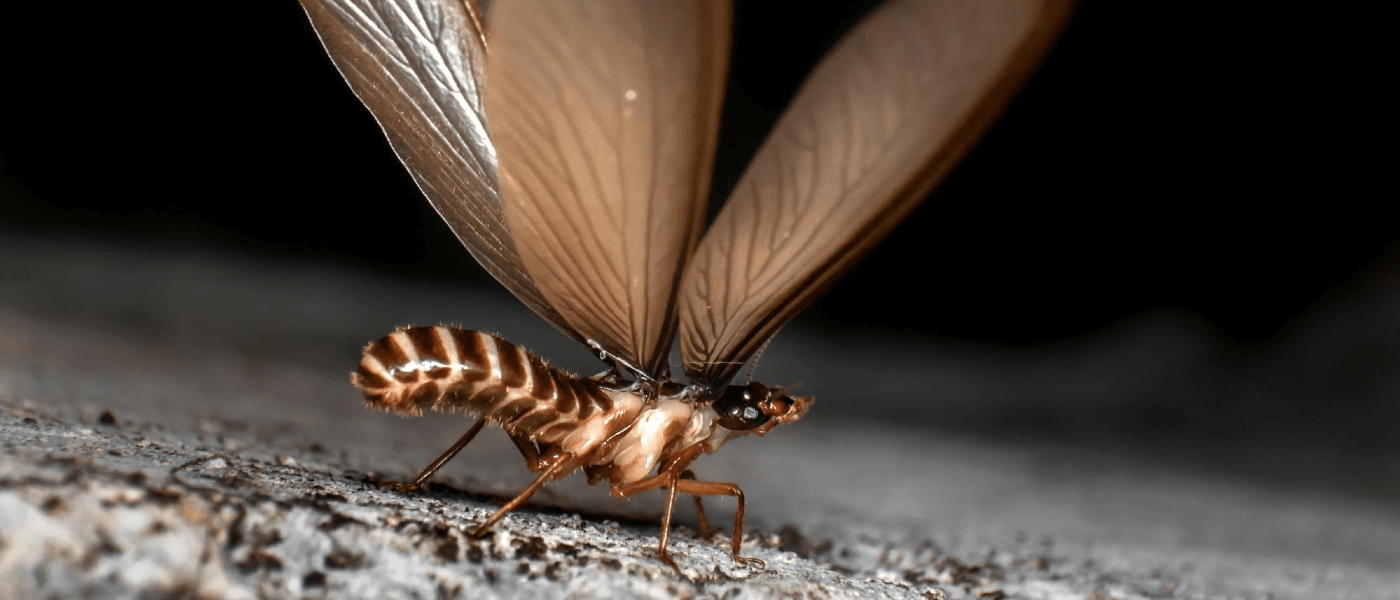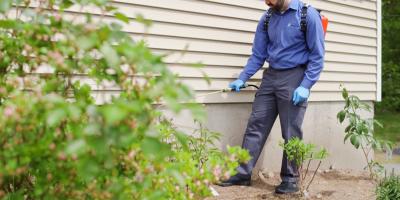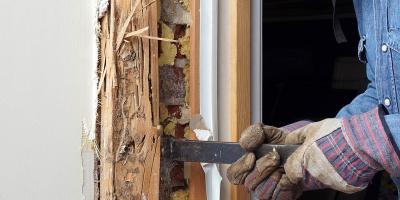Don't Ever Ignore Wings By the Windowsill

Some people discover they have termites without ever once having seen an actual insect. That’s because there are all sorts of indoor clues indicating the presence of termites. Rather than catching the perpetrators red-handed, these homeowners become a sort of insect private detective, sleuthing their way to the ultimate discovery of termites.
A Case of Termites
It might start when they notice dried mud spots on an inside wall or ceiling, whether their interior is made of plaster, sheetrock, wood or another material. It would be a mistake to just leave this new crude smeared on your wall, because you have to wipe this mud off to discover the hole in your wall beneath.
What you’ve found is a spot where your termites accidentally broke through the surface, then quickly patched it up the only way they know how (with wood fiber). They’re not always so clumsy, however, and sometimes the only evidence of their presence are narrow, sunken, winding lines or sunken areas in the wall. These could be behind wallpaper or paint or something else, but there’s a good chance it means there’s a termite swarm just below the surface.
SOS: When Termites Swarm
If you are, by chance, lucky enough to stumble into a termite swarm while it’s still in progress, the discovery can be a terrifying experience. After all, termites mean damage; damage requires repairs and repairs cost money. But if you do happen to catch the destructive little creatures in the act, you can skip the investigation and call a pest control professional immediately. In other words, discovering a live swarm saves you time and money, because it takes the guesswork out of the equation and you can get started immediately to eradicate the problem before further damage is done.
What does a termite swarm look like, you might ask? Termite and ant swarms actually look a lot alike. You might find termites accumulating in windows or under street lights at night. They’re most likely to swarm on warm, sunny mornings, especially after it rained the night before. You can tell a termite from an ant by its extra long antenna, as well as its rectangular body shape. If they have pinched waists, you’re more likely looking at ants, not termites.
Regardless whether you discover a live termite swarm or the remnants of one, there are three conclusions you can immediately draw: One, the infestation is major. Two, the termites have been there for years. And, three, the infestation is probably about to get a whole lot worse if you don’t act quickly. It takes about three or four years for a new termite colony to grow big enough to swarm, and once they do, it means that the colony has grown large enough to expand elsewhere.
Termites cause billions of dollars’ worth of home damage every year. Although they primarily target wood, they can also destroy paper, books, insulation and even swimming pools. The greater their numbers, the greater the damage they can inflict on your property, and the sooner you need to call a pest control pro to come take care of the problem.
Trust Us to Take Care of Termites
Termites will definitely never go away on their own, but the other reason you need a pro is because there are no effective treatments available to average homeowners. In other words, only licensed pest control companies can purchase and legally handle the materials it takes to get rid of termites for good.
Our Secret Weapon
There’s really only one name in termite control, and it’s the main product we use at JP Pest Services to deal with both big and small termite infestations: Sentricon.
If you’ve ever seen small, green circles embedded in the ground along the perimeter of a house or business, you’ve probably seen Sentricon termite protection at work. Those may have been termite bait stations, where worker termites pick up the bait and deliver it to the rest of the hive, including the queen, wiping out the entire colony once and for all.
But before you go around spying on the neighbors looking for termites, know that Sentricon also uses a similar-looking product with no bait, simply to allow pest control professionals to effectively monitor for potential activity. By sticking a normal block of termite-loving wood into the device and into the ground and periodically taking it out to examine it, you can easily tell whether it’s been munched on between services, easily indicating termite activity.
Got termites? Getting the pros involved is the first step to getting them out. Give us a call today.



